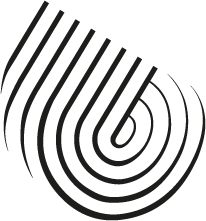I was both nervous and excited to visit the Isle of Eigg as it’s not an environment I’ve experienced before – especially the lack of resources and contact with the outside world.
We drove up from London, staying overnight in Glasgow before catching the morning ferry. Driving from Glasgow to the ferry terminal in Mallaig was an incredible scenic drive, with the sweeping mountains, valleys, waterfalls and coastline relaxing me and easing the nerves. On the ferry, we were lucky to see orcas and seals coming up close to the boat. The thick mist over the sea as we approached Eigg made it feel like we were travelling to a medieval time.
On arrival I was met by Bothy host Lucy Conway, who encouraged me to explore the island and make the most of my time here. My first impression of arriving in the Bothy was -how am I going to live here for two weeks?! But there was no turning back and after familiarising myself with how the solar panels, fire and water worked I felt much more chilled out. I actually really enjoyed the therapeutic process of chopping the wood, building the fire up and cooking on it.
Tower Hamlets, where I’m from, is one of the most densely populated London boroughs and there’s always something mad going on, day and night. I only realised how loud it is where I live on the first day of my stay here. I was in the Bothy in complete silence with only the occasional sound of passing sheep or the wind. The silence really allowed me to think deeply about what is important to me in my life as well as providing an opportunity to work on my music without distraction. Lyrics and song ideas also flowed thick and fast without the interference of everyday life and I left the island with a clear head, ready to make my next steps.
During my visit I attended a ‘session’ – an informal gathering and recital of Gaelic instruments in the Galmisdale Cafe. It was my first time seeing some of these instruments being played live, up close and in the flesh. I liked the way most of the music they played wasn’t rehearsed and the way less experienced players could also join in. These are traits that are also integral to Grime music. A lot of the musicians had come over especially for this, as well as to teach young islanders. The passion they all shared for music really shined through. The session inspired me to incorporate Gaelic instruments into my my music in future, due to their unique timbre and rhythm.
At times I got fed up being on Eigg with the rain, midges and the lack of shops or things to do, due to the massive contrast with what I’m used to. It would generally pass quickly when the sun came out and I could go out and explore.
One thing I noticed that was very different on the island was the community spirit and the way people help each other out. Although geographically the island is very isolated in terms of separation between residents, it’s a lot less isolated than London in the sense that everyone looks out for each other, which seems almost instinctive to the island residents. Charlie, the taxi driver, really helped me understand this on our morning drive to the cafe, as well as explaining people’s motivations for moving to Eigg and how the electricity grid works. I really admired the genuine community spirit, I was made to feel extremely welcome by everyone I met.
Watch Caddell’s video-diary here.









 Sometimes when out hiking conditions may not be as you expected them, you might find that the path you expected to be there is not, or that the weather changes making it impossible to continue. Sometimes plans have to change. So we may not have ticked off the things on our to-do list, drawn up whilst sitting on our sofas pondering over OS maps before we left. What we did discover was more about how we work together. It turns out the Cairngorms are genuinely wild and mapping them could exceed a lifetime’s work. They are like nowhere else we’ve mapped before, we managed to map a few small fragments and we left with an all-too-familiar sense that we now have a long list of places to explore on future visits.
Sometimes when out hiking conditions may not be as you expected them, you might find that the path you expected to be there is not, or that the weather changes making it impossible to continue. Sometimes plans have to change. So we may not have ticked off the things on our to-do list, drawn up whilst sitting on our sofas pondering over OS maps before we left. What we did discover was more about how we work together. It turns out the Cairngorms are genuinely wild and mapping them could exceed a lifetime’s work. They are like nowhere else we’ve mapped before, we managed to map a few small fragments and we left with an all-too-familiar sense that we now have a long list of places to explore on future visits.






